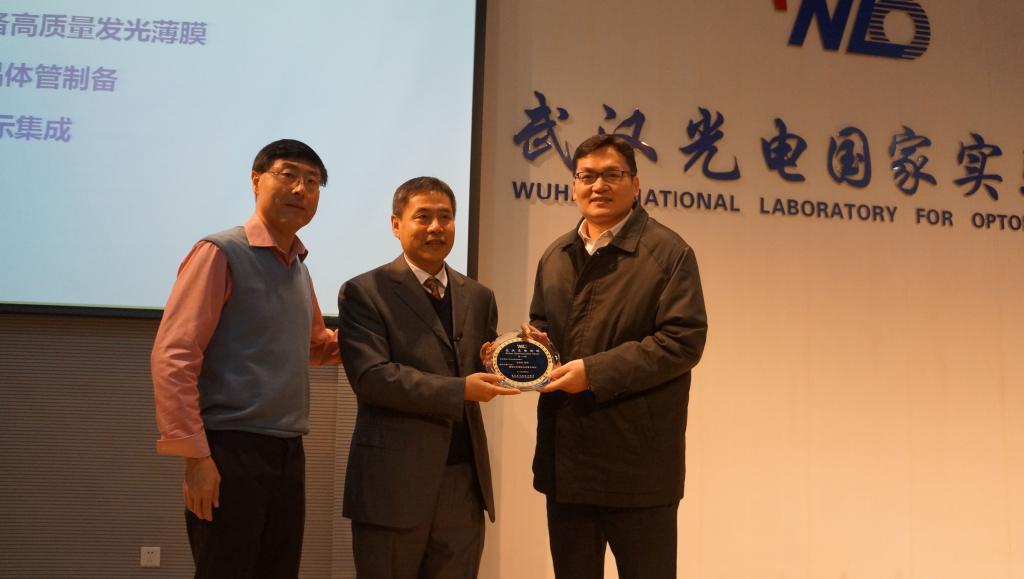WUHAN, China (December 2, 2016) - Wuhan Optoelectronics Forum No. 115 was successfully held in Auditorium A101 at Wuhan National Laboratory for Optoelectronics (WNLO) in the morning of December 2.
OLED display has been utilizing in the field of cell-phones and TV sets. So far, OLED display is fabricated by using vacuum thermal evaporation technology to make organic thin films in industrial production. However, its low key material utilization efficiency and high cost are still bottlenecks for its widely application. Solution process, such as inkjet printing for fabrication of organic films is a promising technology for making large area, low cost, green manufacture display. For the solution process, many key problems are still to be solved, such as, high performance materials, ink formulation, high quality film process, cathode preparing by printing technique. In this presentation, I would talk about the development of our research group in ink formulation, high film preparing and OLED display process.
Junbiao Peng. Professor, dean of the school of materials in South China University of Technology, chief scientist at the "973 project", expert of the national natural science fund committee. He has been engaged in organic polymer luminescence and display materials and technology, key research in AMOLED display, developed the printing type polymer light-emitting display, single color and full color OLED screen, first realized the full printing color OLED light-emitting display; Invented a new type of rare earth doped semiconductor oxide TFT with high mobility, and adopting the new type TFT technology realized the full color, transparent, a touch of rare earth doped oxide TFT AMOLED display, and high performance full color flexible AMOLED display. Published over 200 papers and applied more than 100 patents (including 3 international PCT patents).

